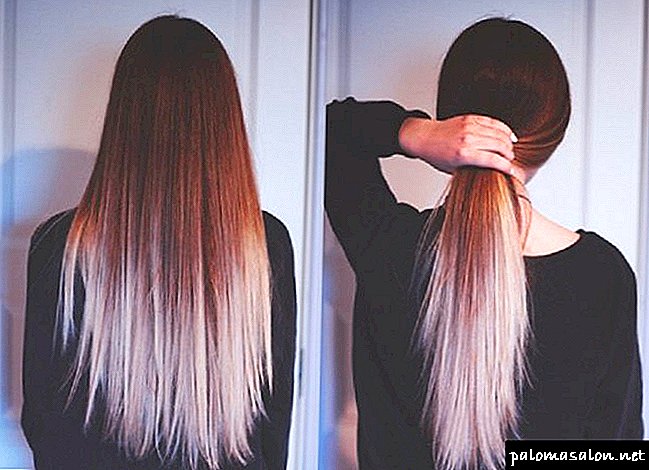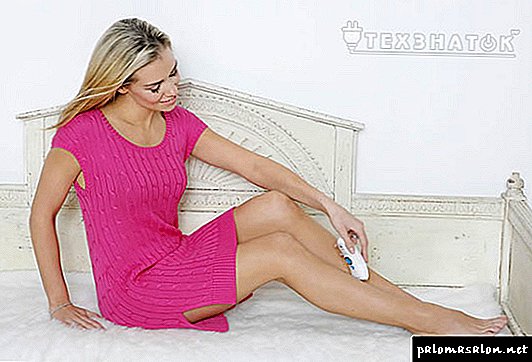Why say that it is impossible dye hair to nursing mothers? If a paintwithout touching the hair roots (it's not difficult for a professional to do that) paint still enter the body? I would like to clarify this for myself unequivocally.
published 11/28/2006 13:54
updated 03/28/2016
- Lactation

Komarovsky E. O. answers
There are several ways to get toxic substances and (or) potential allergens into the body - orally, in the form of injections, through the skin and through the respiratory tract (inhalation route). You are disturbed by the transcutaneous path, but it seems to me in this case not to be particularly relevant. But the inhalation route is very dangerous. The fact is that through the lungs any chemically active substances instantly enter the bloodstream and, of course, quickly penetrate into breast milk. And in this aspect Hair Dye (and floor paints), nail polish (and parquet varnish) are equally dangerous. I fully admit that the risk of short-term exposure can be minimized, especially if you are not at home, but at the hairdresser, if you take a walk in the fresh air after the procedure and “breathe”, if you do not save on quality Hair Dye. But the risk is present, it is unique. To risk or not - the decision is yours. If the husband begins to actively look around, or if there are complexes due to the fact that I really want to be "white and fluffy," then it is definitely unique.
Why is it dangerous to paint?
The body of the nursing mother, who has just undergone childbirth, is sensitive to allergens and various chemicals, and the immunity itself is still very, very weak. That is why hair dyeing during this period, especially with ammonia paint, is an extremely undesirable procedure. It can lead to the following problems:
- The development of a serious allergic reaction in both mother and baby,
- Getting a non-uniform or inadequate declared shade,
- Alopecia (alopecia) or enhanced strand loss. During breastfeeding, hair loss and so exceeds the norm. This is due to micronutrient deficiencies, dandruff and excessive dryness or oily skin. Going to a beauty salon will further weaken the follicles and lead to diffuse hair loss. The structure will also suffer - the tips will exfoliate, fragility and dryness will occur.

Is the smell of paint harmful?
The smell of chemical paint - the main enemy of health. During the preparation and application of the composition to the hair in the room (especially closed) vapors are formed, containing dangerous elements - volatile components and carcinogens. Getting into the lungs with air, they enter the blood and breast milk. For a baby, this can end very badly. He may develop:
- Allergic reaction,
- Intoxication of the body,
- Suffocation,
- Mucosal irritation,
- Edema of the internal organs and larynx.
At the lactating mother herself, dyeing hair during breastfeeding and inhalation of vapors of the coloring matter can also lead to allergies caused by a weakened immune system, hormonal alteration and deficiency of beneficial substances.
To reduce the harmful effects of fumes and to safely dye the hair of nursing mothers, it is necessary to carry out the procedure not at home, but at the hairdresser. If you do not have such an opportunity, be sure to ventilate the room after painting and pre-strain the milk for the baby.
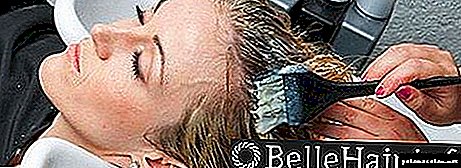
In the following video you can get acquainted with the effect of hair dyeing during breastfeeding on your baby:
Is it possible to dye hair nursing mother - medical advice
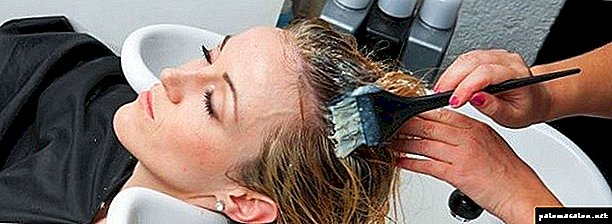
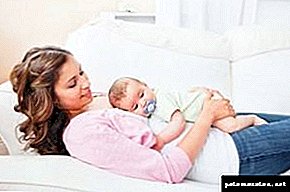
Fetal bearing is a happy time for a woman, but a serious test for the body: pregnancy steals beauty, worsens skin and hair condition, and lowers immunity. Want to quickly return to the old appearance? After childbirth on the background of lactation, it is necessary to find out exactly whether it is possible to dye the hair of a nursing mother, and only after that register to the salon.
What should be a safe paint?
To prevent hair coloring from causing harm to health, special attention should be paid to the choice of coloring products. In this case, you will help advice experts:
- Choose the safest and most gentle dyes. When breastfeeding it is better to use shade tonics and shampoos. It is also necessary to dye your hair with paint without ammonia and hydrogen peroxide - these components are considered the most dangerous,
- Give preference to those brands that include vitamins and nourishing oils - they have a beneficial effect on the scalp,

- Avoid the use of dyes with harmful additives,
- Choose quality paints from proven and reputable manufacturers. Yes, their cost will be much higher, but there is no ammonia in them. In addition, the kit includes a caring balm or rinse,
- A great alternative to chemical dyes are natural products - strong brewed tea, walnut peel, onion peel. Lemon juice and chamomile decoction are very popular among blondes. They lighten hair for 1-2 tones and give them a beautiful platinum shade. But staining with henna and basma is ideal for redheads and brunettes,
- Among the safe methods of staining include highlighting and coloring. When they are carried out, the coloring composition is applied only to individual strands, retreating from the roots up to 3-5 cm. This solution completely eliminates the contact of chemical components with the skin and prevents them from entering the blood.
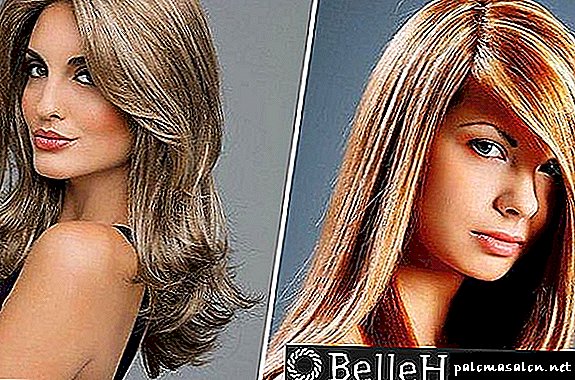
Is it possible to dye hair while breastfeeding a baby?
Hair requires serious attention after the end of pregnancy, but each woman may have individual requirements for appearance. You can dye your hair during lactation, but remember that not every dye is harmless to a nursing mother. In the salons use the following options dyes:
- Natural (based on herbal ingredients),
- Physical (unstable dyes in the form of shampoos and balsams),
- Chemical (permanent and semi-resistant - contain harmful substances ammonia and hydrogen peroxide).
Persistent hair color change with ammonia dyes is a serious effect on the female body, which is contraindicated for pregnant and lactating mothers.
The most important negative factors for ammonia include:
- toxic effects on the respiratory system (after inhalation through the lungs, ammonia quickly enters breast milk),
- harmful effects on the nervous system,
- skin irritation (up to chemical burn),
- allergic reaction (the body of a pregnant and lactating woman does not always respond correctly to external influences).
Permanent paints use small doses of ammonia, but after delivery and breastfeeding, the female body is weakened - even small doses of a chemical can cause complications. In addition, toxic factors may be released into the milk, which will be a risk for the baby.
Spin Painting Rules for HBs
To properly dye hair when breastfeeding, remember a few important rules.
Rule 1. Before starting the procedure, be sure to test for allergies. To do this, apply a small amount of paint on the bend of the elbow or wrist. If during the day there will be no negative manifestations (redness, itching, rash), we can safely continue.
Rule 2. Do the staining on the street or in a well-ventilated room. This will significantly reduce the concentration of volatile substances in the air. In no case do not carry out the procedure in the room where the baby is.
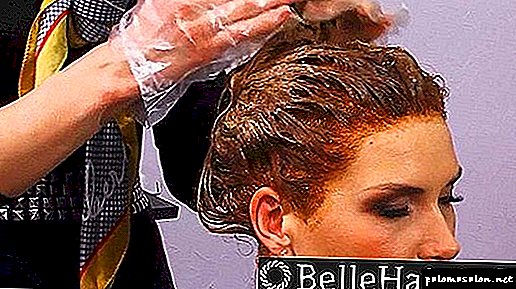
Rule 3. Milk needs to be decanted in advance so that your baby has something to eat during the next feeding. If you have not done this for some reason, it is better to prepare an artificial mixture. Remember, you can breastfeed your baby only 3-4 hours after staining.
Rule 4. After the procedure, it is desirable to spend some time (1-2 hours) in the fresh air. Very useful walk in the park or forest. This will allow the lungs, blood and breast milk to get more oxygen and be cleared of chemicals faster.
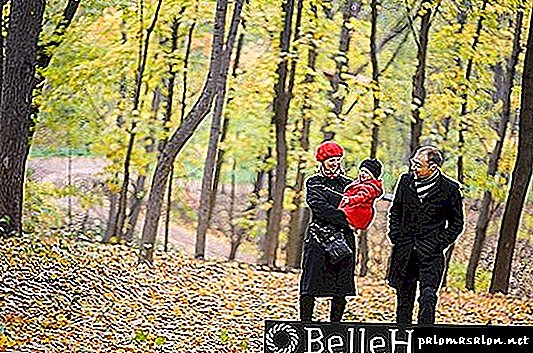
Rule 5. To evaluate the effect, lubricate the dye only one thin strand. Wait for the right time and check the result. Remember, the color may turn out to be completely different from what you would like. This is due to changes in hormonal levels that occur in the body of each mother. To avoid problems with color paint should be a little lighter.
Rule 6. Do not contact the child until you wash off the paint and get rid of the unpleasant smell.
Rule 7. Do not forget to decant the milk after painting. It will need to be poured out, because it is in this portion that the most carcinogens are concentrated. For reliability, pumping can be repeated several times.
Rule 8. When using natural dyes, no special measures are needed. You can lead a normal life and communicate with the baby during the procedure.
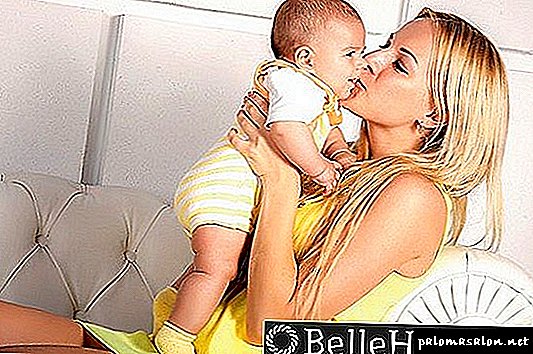
If these conditions are met, you will minimize the threat to yourself and to your child. We hope we have answered all the questions, and now you know for sure if you can dye your hair during breastfeeding.
Is it possible to dye your hair dye without ammonia nursing mom
During breastfeeding, women have to monitor nutrition and health status - any external influences can provoke a deterioration in the quality of milk, which has a negative effect on the baby. The hormonal background is changed, the immune protection is weakened: during lactation one should refrain from a radical correction of appearance.
You can cut your hair, use ammonia-free paint, but you should not drastically repaint using permanent dyes. To important and mandatory rules that must be remembered nursing mom:
- before any kind of impact on the body, it is better to consult a doctor,
- during lactation can not apply chemical dyes,
- you can not paint at home (better use the services of a professional in the cabin),
- during the painting procedure it is unacceptable to be in a closed and stuffy room, even if an ammonia-free paint is used,
- The body of a lactating woman may react incorrectly to any paint, so always before painting it is necessary to test for an allergic reaction.
If you breastfeed, then first think about the baby, and then - about yourself. This rule applies to any situation in the life of a postpartum and lactating woman.
Is it possible to dye hair with henna during breastfeeding
After the birth of the child should take at least 3 months, after which you can actively do appearance. The baby has grown and fully grown, and has received all the main factors of immune protection with breast milk. Against the background of lactation, you can dye your hair with unstable natural dyes, of which the most optimal are:
- henna,
- Basma,
- herbal remedies (chamomile, linden, cinnamon, onion peel, coffee).
An important positive effect of herbal preparations for dyeing is strengthening weakened hair (chemical dyes cannot provide this effect). It is permissible to use physical dyes - tint balms and shampoos, which are harmless, but do not provide a long effect.
We should not forget about the vitamin-mineral preparations recommended by the doctor, which help to restore the general state of health of the postpartum woman. To improve the appearance of a woman must be a comprehensive approach to solving problems, continuing to take care of the little one and not forgetting about her own beauty.
The undoubted advantages of henna staining include:
- Safety (it is possible in any condition of the woman - during pregnancy and against the background of lactation),
- Positive effect on the hair structure (improved nutrition of the bulb, accelerated growth and strengthening),
- Hair protection (preventing the negative effects of the sun, water, heat),
- Effective color correction with improved appearance.
Breastfeeding may be delayed for a period of up to 1-1.5 years. Lactation is not a reason for not using natural dyes for hair. Henna and herbal remedies can dye hair against breastfeeding without fear for the health and development of the baby.
- breastfeed before painting,
- The next attachment to the chest should be only after 6 hours,
- Chemical dye dyeing procedure should be carried out in a room with good ventilation (the less ammonia the nursing mother breathes, the better),
- after the salon it is necessary to take a walk in the park or in the forest (clean air will quickly remove toxins from the lungs),
- after 2-3 hours it is necessary to express breast milk,
- 6 hours after the procedure, you can safely give a breast to the child.
If you follow the preventive rules, you can dye the hair of a nursing mother and not fear for the health of the child.
To dye your hair when breastfeeding: is it possible?

Pregnancy, and then motherhood, impose additional responsibilities on your life. Taking care of a child, the need to feed him often, taking care of his health take a lot of time.
During breastfeeding of the baby, you have to be very attentive to your health, nutrition and lifestyle. This includes the use of cosmetics, hair coloring, the use of household chemicals. Can I dye my hair when breastfeeding? Today we will talk about this.
Is hair coloring harmful?
To look good, we use all possible ways: using cosmetics, hair coloring, getting stylish clothes, doing manicures, pedicures and caring for the body. When a woman becomes a mother, the desire to look beautiful does not go anywhere, and this is normal.
How many anecdotes and ridiculous statements ridiculing an unkempt mother, who is completely mired in everyday life and children, can be found on the Internet.
Hair coloring is a simple procedure in our time. If earlier there were often incidents when, when breastfeeding, the result of staining turned into a quiet horror, now such cases are rare. But we can not exclude the fact that during breastfeeding hormones change and the shade of hair may not be exactly as expected.
Important! Warn your master that you are breastfeeding - let him take this moment into account when choosing a dye to dye your hair.
What is the effect of dye on the scalp and hair?
When breastfeeding is often found increased hair loss. Coloring can exacerbate the situation. To increased hair loss and even to baldness (alopecia), staining leads if dye containing hydrogen peroxide or ammonia is used.
Strengthens the process of hair loss breastfeeding, if the woman's body is experiencing a lack of vitamins and trace elements required by the child. To learn how to eat properly and at the same time not to harm the baby, learn from the course Safe nutrition for nursing mothers >>>
The scalp reacts to their lack of dry or oily, the presence of dandruff, possible allergies. Hair can become dry and brittle with split ends. Hair coloring only exacerbates their condition.
- High-quality hair dye does not adversely affect the composition of breast milk, therefore, coloring is not contraindicated,
- No need to decant after visiting a hairdresser, or withstand time intervals to feed the child.
We do not live in the Stone Age, so be aware that the stories of your mothers and grandmothers about spoiled milk or a baby’s refusal from the breast after your mother dyed her hair is a myth.
The smell of paint and its effect on the state of the mother and child
The maximum harmful that occurs when dyeing or chemical perm of hair is the ingress of its vapors, that is, toxins into the woman's body. It is the smell of coloring agents is very harmful and dangerous.
It is possible to make staining with paints of well-known brands, in which ammonia is absent, which significantly weakens the staining, but reduces the negative impact. The price of this paint is quite high, but it is this paint that contains hair care balm.
Attention! Before dyeing, it is necessary to conduct mandatory testing of allergy coloring products!
Safety precautions that must be followed:
- To make coloring only with products containing natural ingredients (henna, chamomile, basma, mousses),
- Feed the child before staining,
- The room for painting should be spacious and ventilated,
- Testing is carried out even on familiar means of application.
Otherwise, the staining procedure is not contraindicated or prohibited when feeding a child. Just do not take the baby with you to the hairdresser. The smell of paint, even for adults, is difficult to sustain, and for an infant, whose sense of smell is sharper than ours several times, such a pungent smell may seem excessive.
Know! An allergic reaction to odors is not excluded. It will be better if the child waits for you at home.
The coloring itself takes from 1 to 3 hours. Consider this point so that there is enough time to return home to the next feeding.
Infants are attached to the breast very often (for details on the frequency of infant feeding, see the article Feeding on Demand >>>).
Therefore, the optimal age of a child when he can spend 1-2 hours without you is about 3 months (read the actual article What should a child be able to do at 3 months? >>>).
If you need to leave for a longer time, it is better to squeeze the milk and let the person who stayed with it feed the baby with a spoon. How to do this, read the article How to express breast milk by hand? >>>
I wish you to remain a beautiful and loving mom!
Can I dye my hair when breastfeeding (advice Komarovsky)
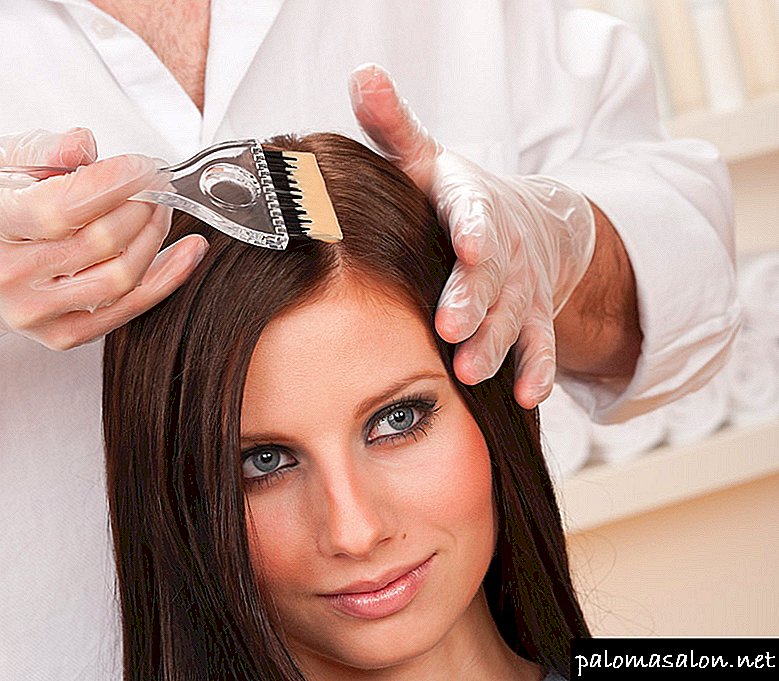
Pregnancy and breastfeeding period require maximum attention from the woman. At this time, the mother and child are inextricably linked: with the mother's milk not only useful, but also harmful substances get into the baby's body.
Therefore, it is necessary to exclude improper nutrition, to limit the use of cosmetics, medicines, including for outdoor use. Careful attention should be paid to hair care products, including the use of chemical dye.
Can I dye my hair when breastfeeding?
Hair coloring during breastfeeding
The human body is like a sponge - it instantly interacts with chemicals and absorbs them through the skin, lungs, and digestive tract.
therefore during the period of HB (breastfeeding) a woman needs to be especially careful not to harm the immature body of the child. Hair coloring during breastfeeding is a risk factor that can cause severe allergies in a nursing woman and baby.
The mechanism of action of hair dye with HB
The effect of hormones during pregnancy and breastfeeding can significantly change the natural hair color.
So, platinum blondes by nature notice a darkening of the hair by 2-3 tones, the changes on the dark hair are not so noticeable. Unfortunately, the darkening of the hair after carrying a child is an irreversible process.
To fix the situation, you have to dye your hair and turn colorless strands into something worthwhile.
Hair coloring during breastfeeding is undesirable, as it can cause:
- allergic reaction of mother and baby,
- obtaining a color that is not uniform or different from that declared by the paint manufacturer,
- enhanced hair loss and alopecia (alopecia).
In the postpartum period, the composition of hormones in the woman’s blood changes dramatically, which significantly affects the emotional state of the young mother. After childbirth, a woman may experience severe stress, which generally has a poor effect on the hair. The psycho-emotional state of a woman after childbirth is one of the causes of hair loss during the period of GW.
During breastfeeding, hair loss increases due to the lack of trace elements, frequent allergies, dandruff, too dry or oily skin. Staining curls with chemical paints further weakens the follicles, which can cause diffuse prolapse. The structure of the hair also suffers - dryness, brittleness, split ends appear.
The main reason for denying the coloring of curls with HB is the rapid release of chemicals through the respiratory tract.
Within 30-40 minutes of coloration, ammonia and other toxins inevitably enter the blood of the nursing mother, especially if the procedure is performed indoors.
In this case, a recommendation is given to air well after dyeing, decant a portion of milk and carry out the procedure not at home, but at a hairdresser.
With intoxication, you can get suffocation, swelling of the larynx, internal organs, severe irritation of the skin, mucous membranes. For young children, this condition is very dangerous. In addition, weakening of immunity with HB, lack of trace elements, the riot of hormones in the blood can cause allergies and nursing mothers.
How to safely dye hair with HB
If, however, the decision to dye hair was made, it is necessary to choose the means that will bring minimum harm to the child. These are tinted shampoos, ammonia-free paints, natural products with a coloring effect: henna, basma, lemon juice, chamomile decoction and others. When dyeing curls during HB, it is important to adhere to the rules:
- It is recommended to dye your hair in a salon or barber shop - using a non-contact method of coloring, chemicals will not get on the skin.
- One way to change the color of the curls is to highlight or colorize. In this method, the paint is applied to individual strands, departing from the roots by 3-5 cm. Thus, the chemicals do not come into contact with the skin and do not penetrate into the blood.
- Paint should be as safe as possible - without ammonia, contain natural ingredients. You can choose a tool of a well-known brand with a good reputation. As a rule, such products for coloring curls have a high price, do not contain ammonia, as a part there are caring balms, rinses.
- You can use natural dyes. So, lemon juice bleaches hair 1-2 tones, gives a platinum shade. Natural henna and basma are suitable for brunettes, dye their hair in dark colors. With a decoction of chamomile can make your hair lighter and give them a golden hue. Known folk remedies include: onion peel, walnut peel, strong black tea.
- After staining, take a walk for 1-2 hours in the open air, so that volatile components disappear.
- After staining, a portion of milk should be decanted, and the baby should be offered an artificial mixture.
Summarize
Masters of hairdressing all over the world are arguing whether it is possible to paint curls during GW. There is an opinion that dyeing hair during breastfeeding is not worth it - you get a completely different shade or the paint will not take at all. Others are confident that with the precautionary measures there will be no consequences for the mother and the child.
To decide whether to dye hair during the period of GW or not, young mothers will have to. It is important to understand the responsibility and risk of a procedure in which not only a woman can suffer, but also a child. Theoretically, hair can be dyed during HB; in practice, it is better to wait until the baby gets stronger or stops sucking the breast.
Can I dye my hair when breastfeeding: possible harm and recommendations
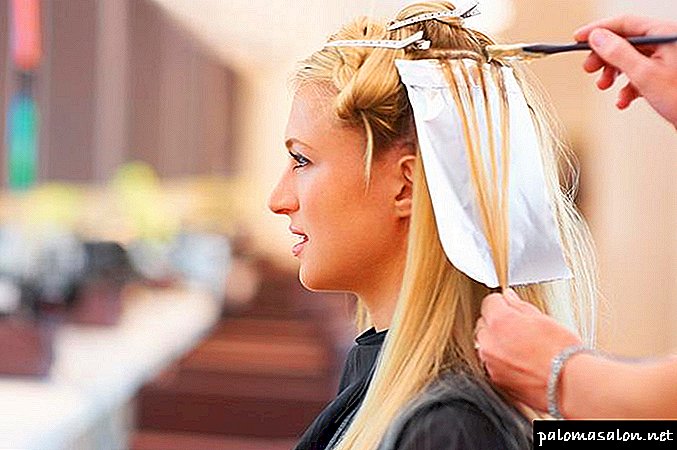
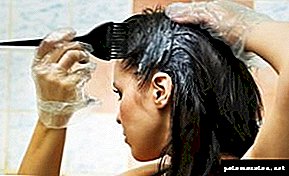
During the period of lactation, a woman should especially carefully monitor what she eats, what cosmetics she uses and what compositions she contacts.
From this depends largely on the health of her baby, with milk in his body can get harmful substances. Therefore, if you decide to dye your hair, you should find out if you can dye your hair while breastfeeding.
During lactation, it is recommended to choose more gentle formulations and carefully check the means for an allergic reaction.
Changes in the body and hair during breastfeeding
During pregnancy, the condition of the hair often improves, but after childbirth, a change for the worse is noticeable. The hair is thinning, curls lose luster and strength. This is due to the changes that occur in the body during this period.
After childbirth, the level of estrogen decreases to normal, the density of hair will gradually increase and fully recover in about six months.
But during lactation, there are other factors that influence hair condition:
- Chronic fatigue and stress due to lack of sleep, changes in the mode of the day.
- Strict diet in order to avoid allergies to milk in the baby. A deficiency of vitamins and microelements, for example, calcium, has a negative effect on curls.
- Hair loss and deterioration of their condition during breastfeeding could also be caused by anesthesia, which was used during childbirth, cesarean section.
- Hormonal imbalance causes dandruff and increased fat content, or vice versa, dry hair.
- Poor care for hair after childbirth due to lack of time.
Harm from staining during lactation
Hair dye for HB may cause an allergic reaction. This is due to the fact that during this period the body's sensitivity to chemicals, toxins and poisons increases due to weakened immunity.
Coloring during lactation can cause the following negative points:
- Serious allergic reaction in a woman and child.
- Strengthening the process of hair loss, baldness.
- The deterioration of the hair, the lifeless appearance of the strands.
- Coloring with HBs can further weaken the hair roots and provoke diffuse alopecia, in which the hair evenly thins over the entire head. Worsen structure of curls. They begin to exfoliate, split, become dry.
The effect of the smell of paint on a woman and child
The smell of chemical paint can cause serious harm to health. Especially if the room is poorly ventilated. Vapors accumulate, hazardous substances contained in them, volatile components and carcinogens, enter the lungs and blood of women.
Together with the bloodstream, they are distributed throughout the body, getting into breast milk. This can lead to the following disorders in the infant:
- allergy,
- intoxication,
- feeling choking
- irritation of the mucous membranes,
- swelling of the larynx and internal organs.
Paint selection with HB
Chemical dyes usually contain ammonia or hydrogen peroxide. These substances irritate the scalp. During breastfeeding, hormonal changes and the dye can cause allergic reactions. At the same time, the dye could be transferred absolutely normally.
Hormonal adjustment during pregnancy and lactation usually leads to the fact that the hair of a woman becomes darker by several tones. The result of staining may also be unpredictable. Paint falls unevenly, and the resulting shade does not match what is indicated on the package.
What paint to choose on GW:
- If a woman still decides on GW to dye, then you need to take care of safety measures and choose the right dye. It is recommended to use an agent that does not contain ammonia and hydrogen peroxide. Toning products will do. They contain no metal ions, which makes the tonic safe for the health of the mother and child.
- During breastfeeding It is recommended to choose sparing types of staining, for example, highlighting. This is a type of staining that does not involve contact with the scalp. The coloring composition is applied to each strand at a certain distance from the roots. Paint minimally affects the skin, does not cause allergies and does not penetrate into the bloodstream.
- Nursing women are encouraged to use natural dyes. For red henna is suitable, which gives a bright red shade. Brown-haired can use the onion peel, tea brewing or walnut skinned. Brunettes can dye their hair with henna in combination with basma. They give a rich dark tint. Blondes can take advantage of lemon juice, which will brighten hair in several tones. Suit and decoction of chamomile. He will not only lighten, but also give the curls a golden hue.
Recommendations when coloring in the period of GV
Wanting to dye your hair during lactation, You must adhere to the following rules:
- The selected color should be only a couple of shades lighter than natural to avoid unexpected results.
- Preference is given to non-aggressive non-ammonia dyes and products without hydrogen peroxide.
- Before you apply the paint, milk is decanted or feeding the child.
- After staining, feeding is carried out after decanting, so that the baby receives a new portion of milk.
- Before using the paint must conduct a test for allergies.
- The paint must be applied by a stranger or a master. This will help minimize contact with paint.
- The room in which the procedure is carried out is thoroughly aerated, ensuring an adequate supply of fresh air.
Experts disagree on whether it is harmful to dye hair to nursing mothers. Experiments on whether the chemical components penetrate the bloodstream or not have not been conducted. Their negative impact on the child has not been proven. Therefore, each woman decides for herself whether to dye her hair during lactation or not.
Is it possible to dye hair when breastfeeding without risk
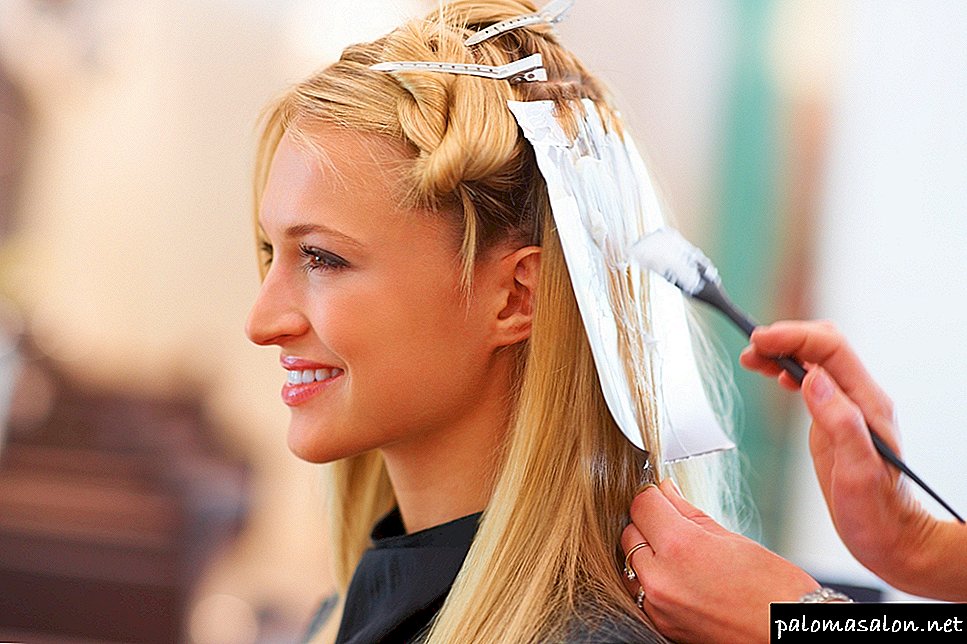
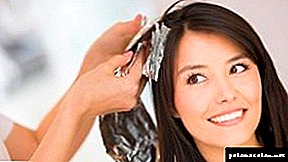
Home ›Appearance› Is it possible to dye hair when breastfeeding without risk to the health of the baby?
After the birth of a baby, nursing mothers are very cautious about the use of preparations containing various chemicals. This applies to medicines, products, cosmetics and hair care products.
They are particularly concerned about the possibility of painting hair with chemical dyes. It's so eager to look beautiful again, but it is impossible to harm the health of the child.
Let us deal with the dangers for crumbs in the usual hair dye.
To paint or not to paint
It should be immediately noted that only paints containing ammonia and hydrogen peroxide have a negative impact on the health of the mother and baby. If you carry out the staining with natural dyes, such as henna, basma, lemon juice, chamomile, then the body will not be harmed. Such dyeing methods that do not cause the dye to contact the scalp, such as highlighting or coloring, also reduce the harmful effects of chemical dyes. There are a number of paints that do not contain harmful substances, which, however, affects their durability. You can also change the color of the hair with the help of coloring tools, pencils for coloring strands. After the birth of the baby in women there is intense hair loss. The use of cheap chemical dyes in this period of time can further enhance the process of hair loss, or even lead to focal baldness.At the same time, high-quality expensive paints contain substances that help strengthen the hair follicles. In addition to allergic reactions, a change in the hormonal balance can lead to the fact that the final color of the hair will turn out to be not at all what it should be. Hairdressers note that after giving birth, the shade of a woman’s hair becomes 2–3 tones darker, which is especially noticeable on light-colored hairs. For the same reason, after painting the hairstyle may turn out to be non-uniform color. In order for the unevenness of painting to be not so noticeable, it is better to do highlighting or coloring the strands instead of solid coloring. In fairness it should be noted that hair coloring has not only a negative impact on the female body.
Therefore, the nursing mother should make the final decision on the procedure of painting, realizing the possible risks and consequences.
Negative consequences
The painting process affects not only the condition of my mother's hair, but also the well-being of a newborn child. And, unfortunately, for the baby this effect is unfavorable, although it can be minimized.
The negative impact of chemicals for hair manifests itself:
- in contact with skin
- inhalation of ammonia vapors and other substances that make up dyes.
Contact of the dye mixture with the scalp may cause an allergic reaction.
Due to the fact that after giving birth, changes in the hormonal composition occur in the body of a nursing mother, allergies can appear on the scalp under the influence of chemicals even in the case of applying paint, which the woman actively used before pregnancy.
When breastfeeding, a woman should check all paints used for allergies by applying a small amount of the mixture to the skin in the elbow area. If a negative reaction is not observed, then the paint can be used by taking the necessary precautions.
Harmful substances can not pass through the scalp into breast milk and cause any harm to the baby.
Inhaled fumes of ammonia and other toxic substances in 30–40 penetrate into the mother's milk, and with it can get into the body of a child. They can cause allergic reactions in a baby, as well as irritation of mucous membranes, laryngeal edema, and even suffocation.
What if you really need to paint?
In the event that the hairstyle still needs mandatory painting, all measures should be taken to ensure that this process does not harm the health of the baby.
To do this, follow these guidelines:
- If possible, dying mother should dye her hair with natural dyes or semi-permanent dyes, tinted shampoos and balsams. All hair care products must be made by renowned manufacturers who have gained credibility with the quality of their products.
- When using chemical dyes, it is better to highlight strands.
- Painting should be carried out in a well-ventilated area in order to minimize the concentration of toxic substances in the air and reduce the likelihood of them entering the lungs. And then for 1.5–2 hours you need to be in the fresh air, so that all harmful substances disappear as much as possible.
- Hair coloring should be carried out immediately after feeding, and it is desirable to do this not at home, but in a hairdressing salon. During the next feeding period, the baby should be fed not with the breast, but with the milk prepared in advance. And milk, which could get into toxic substances, is better to decant and pour out, to prevent possible health problems of the baby.
- 4 hours after painting, the level of toxins in breast milk is reduced due to the process of diffusion of the exchange between blood and milk, after which the baby can be applied to the breast.
The process of painting the hair can adversely affect the infant. However, to the question: “Is it possible to dye hair when breastfeeding?” The answer will be rather positive. After all, using the above recommendations, the mother will be able to minimize the negative impact of toxic substances on the baby and protect him from possible problems.
(2 vote (s), as a result: 5.00 out of 5) Loading ...
Possible harm
In order to understand whether a nursing mother can dye her hair, it is necessary to figure out what such procedures can be harmful for herself and the baby. The negative effect of the coloring mass is associated with its aggressive composition.
Even the most modern and sparing paints in large quantities contain various chemical components that are able to penetrate into the body of a nursing mother, linger in breast milk and with it get into the internal organs of the child.
Most women, who ask whether nursing hair can be dyed, believe that the ingredients of the composition penetrate into the bloodstream (and from it into milk) through the skin of the head. However, this statement is rather from the field of prejudice: the concentration of substances in the blood will be so small that it will not have any effect on the baby, and most likely it will not get into breast milk at all.
Chemical dyes can cause much more harm to mommy, because after pregnancy and childbirth hair is already depleted, and the dyeing compound sometimes damages the hair structure even more.
It is also necessary to take into account that the hormonal background of a woman during lactation is still not established, therefore it is difficult to say for sure how the skin and hair will react to the effects of chemical dyes. By the way, for the same reason, the color can come out not at all as expected, and you should also be ready for this.
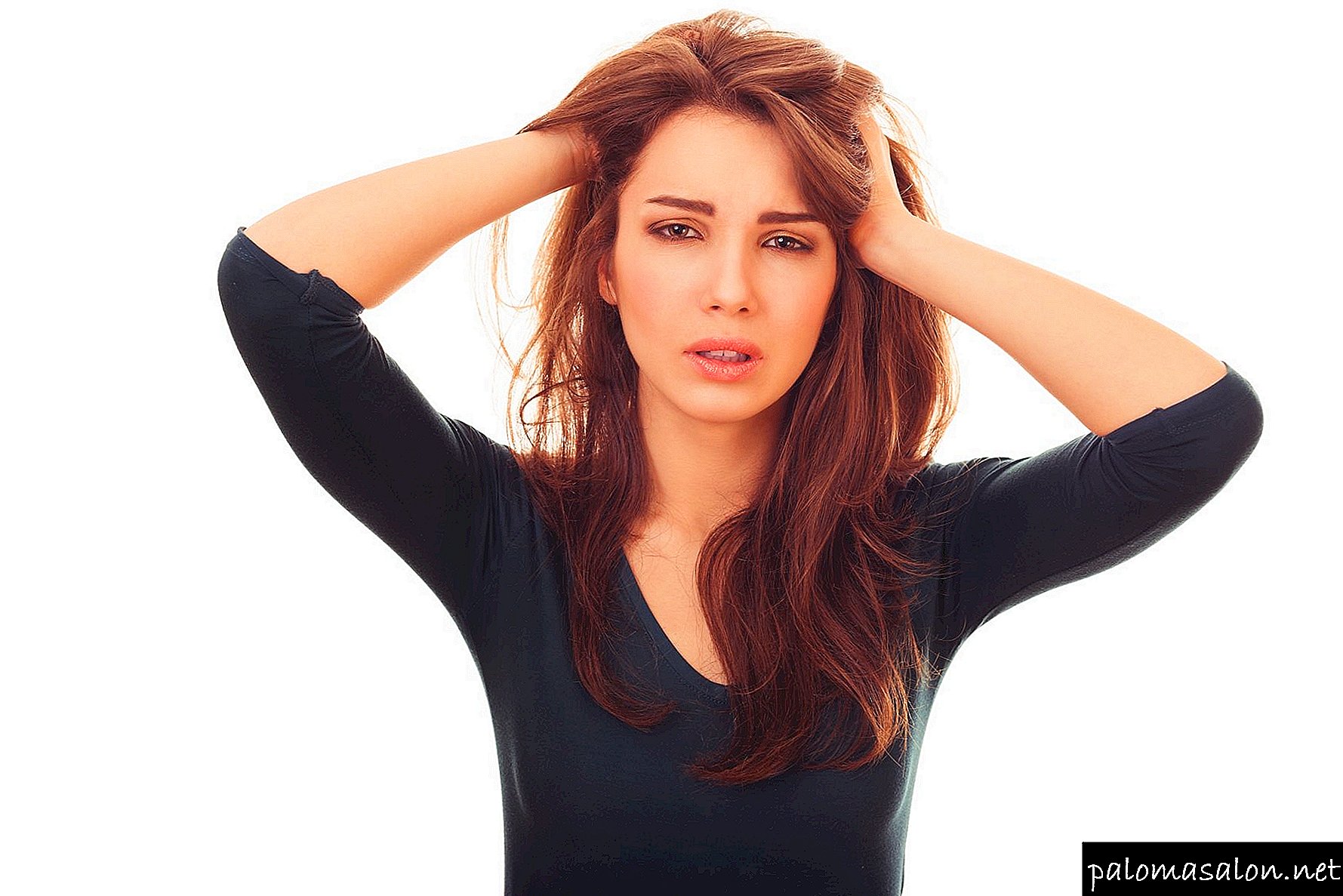
For a child who feeds on breast milk, it is much more dangerous than a couple that stand out from the ready-made coloring composition. Of course, dye your hair in the same room where the baby is, no mom will. But volatile substances will harm the baby when they fall into the lungs of the mother, and then into the blood and milk. The most "harmless" that couples can cause in infants - is an allergic reaction.
Answering the question whether a nursing mother can dye her hair, it would be wrong to say that this procedure is only harmful. In modern high-quality paints with a safe composition add caring oils and vitamins. Therefore, after using such a dye mixture, the appearance of the hair becomes much better, and the woman herself begins to feel well-groomed and attractive again, which is so necessary for her after childbirth.
Chest-fed hair coloring: good or bad?
- Experienced pediatricians who observe babies do not advise mothers to dye their hair. However, opinions on this issue are ambiguous, it all depends on the harmfulness of the pigment used.
- Often in the colors intended for the hair, there is ammonia and other components (for example, peroxide). They are dangerous, so when breastfeeding to buy such compounds can not.
- You can afford staining, but only with non-ammonia components. Suitable natural dyes, presented in the form of henna or basma.
- Many mothers believe that in the process of staining chemicals through the pores of the scalp penetrate into the bloodstream and enter the breast milk. Yes, but this statement is partially erroneous. Only part of the preparations that cannot be harmed get into the milk.
The subtleties of hair coloring when breastfeeding

- Choose paint in which there are no aggressive components. Of course, this list includes ammonia or hydrogen peroxide. Usually they are contained in clarifiers, so blondes will have the hardest.
- Check with your doctor, let him give his recommendations. Surely the specialist already has a scribbled list of tools that are safe to use.
- If possible, give up paints altogether, use toning shampoos and balms during breastfeeding. They are quite effective, but are considered safe for the baby.
- Consider that hair dyeing during the crucial period should be carried out exclusively by proven and safe means. Components should not cause side effects and allergic reactions. It is not necessary to consider new means not to risk. Otherwise, you have to resort to using antihistamines.
- Spend dyeing hair only in a well-ventilated room. Harm of volatile chemicals should be minimized. It is strongly recommended to carry out the procedure not at home, but in a professional beauty salon. The specialist will be able to paint the hair without touching the skin of the head.
- If possible, give preference to the procedure of calorification or highlighting of strands. Such hair coloring implies a minimum amount of dye and harmful composition. If you decide on a similar procedure at home, in any case, do not manipulate in the same room with the child.
- Also, do not come close and do not contact with the baby while the paint is still on its head. Ammonia based compounds are especially dangerous. After a successful procedure, you need to spend some time in the fresh air. Allowed to spend a long walk on the street with the baby. The smell of paint should completely disappear.
- Before the staining procedure, it is highly recommended that you express some milk. The product should be enough for several servings for the child. The baby should be provided with food for several hours. If you have not managed to express milk, it is recommended to resort to using baby food.
- After successful hair dyeing, milk must be expressed on a mandatory basis. Only from this portion you need to get rid of. In such milk is concentrated a large concentration of harmful substances and carcinogens. For persuasiveness, the procedure is best repeated several times.
- If you decide to produce staining of strands with products of natural origin in the form of henna, onion peel, basma, lemon juice or chamomile broth, you need not take precautionary measures. In this case, everything is much simpler, you can safely do the usual things and contact with the baby.
Danger of hair coloring during lactation
If you have not clarified from the above, whether it is possible to subject the hair to dyeing, we will reply. Yes, of course, but only in compliance with practical recommendations. Carefully read them, choose ammonia free paint.

